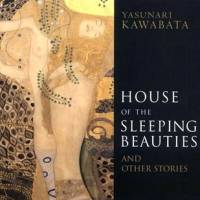Yasunari Kawabata's novella "House of the Sleeping Beauties and Other Stories" is one of his finest works. It is primarily concerned with the connections between the youth and old age, sex, death, life and memory.
House of the Sleeping Beauties and Other Stories, Yasunari Kawabata, translated by Edward Seidensticker.
Kodansha USA, Fiction.
Kawabata often writes in metaphor, giving cause for reflection long after the final page is turned, and the lead characters in each of these three stories are complex individuals in search of purity. Kawabata emphasizes the ability of the human mind to accentuate the relationship of an individual with the existential world.
The character's reflections on past mistakes usually occur at the threshold of death. And then how they desperately yearn for that impossible chance of grabbing youth, even for a brief moment, in order to relive a purer existence. In the title story, Eguchi sleeps beside drugged young girls, who represent the beauty of life, as an opportunity to reflect on the women he has known throughout his life, including his wife and daughters. Sleep provides Euchi with a transition to his approaching death.
Kawabata's unusual exploration of life continues in the other two stories in this collection. "The Arm" also reflects the purity of life, as an impure old man replaces his arm with one belonging to a woman. The protagonist of "Beast and Man," meanwhile, feels more at ease among animals, and his thoughts on this shatter the fine line between humane and inhumane environments.
As always, Kawabata's writing style has a lyrical, philosophical tone, suggestive of the unknowable mysteries of life.
Read archived reviews of Japanese classics at jtimes.jp/essential.



